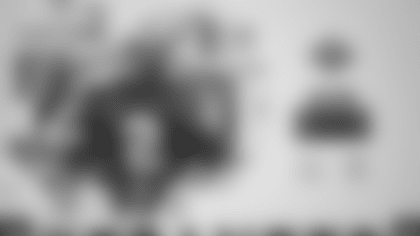Ronald Jones has been working hard on a variety of things that he believes will make him a more productive pass-catcher in 2020, from hand placement to route-running to recognition of defenses. He's gotten some specific pointers from the Tampa Bay Buccaneers' new quarterback, Tom Brady, who has had great success throwing to running backs in recent seasons in New England. All of that plus the declaration by Head Coach Bruce Arians that Jones is the "main guy" in Tampa Bay's backfield has led to speculation that Jones could improve significantly on his total of 31 catches from 2019.
As Greg Auman of The Athletic pointed out on Monday, if Jones boosts his total to 50 or more receptions in 2020, he would provide an element to the offense the Bucs haven't seen often in the last decade and a half.
That one back to make it halfway to a hundred catches in a season in recent years was Charles Sims, who got to 51 in 2015. Sims was a talented pass-catcher but had difficulty staying on the field in two of his four Buccaneer seasons. Otherwise, Buccaneer running backs have usually topped out in the 30-catch range since the mid-2000s.
Before that was the golden era of pass-catching Buccaneer backs, as five of the 11 50-catch seasons by Tampa Bay ballcarriers were recorded between 1996 and 2003. Warrick Dunn (1999 and 2001) and Michael Pittman (2002 and 2003) had two each and Mike Alstott made it to 65 as a rookie in '96. The rest of the list is dominated by James Wilder, who did it four times, leaving one spot for a random Vince "Pookie" Workman 54-grab campaign in 1993.
So if you're looking for the best pass-catching running back in franchise history, your field of candidates is right there. I'll eliminate Workman and Sims for their relative lack of longevity, leaving us with Wilder, Alstott, Dunn and Pittman, in order of their arrival in Tampa. Who should we put in the top spot? Let's see.
View photos of the Tampa Bay Buccaneers 53-man roster.

S Andrew Adams

OLB Shaquil Barrett

RB Le'Veon Bell

RB Giovani Bernard

QB Tom Brady

TE Cameron Brate

OLB K.J. Britt

G Alex Cappa

CB Ross Cockrell

WR Jaelon Darden

ILB Lavonte David

CB Carlton Davis III
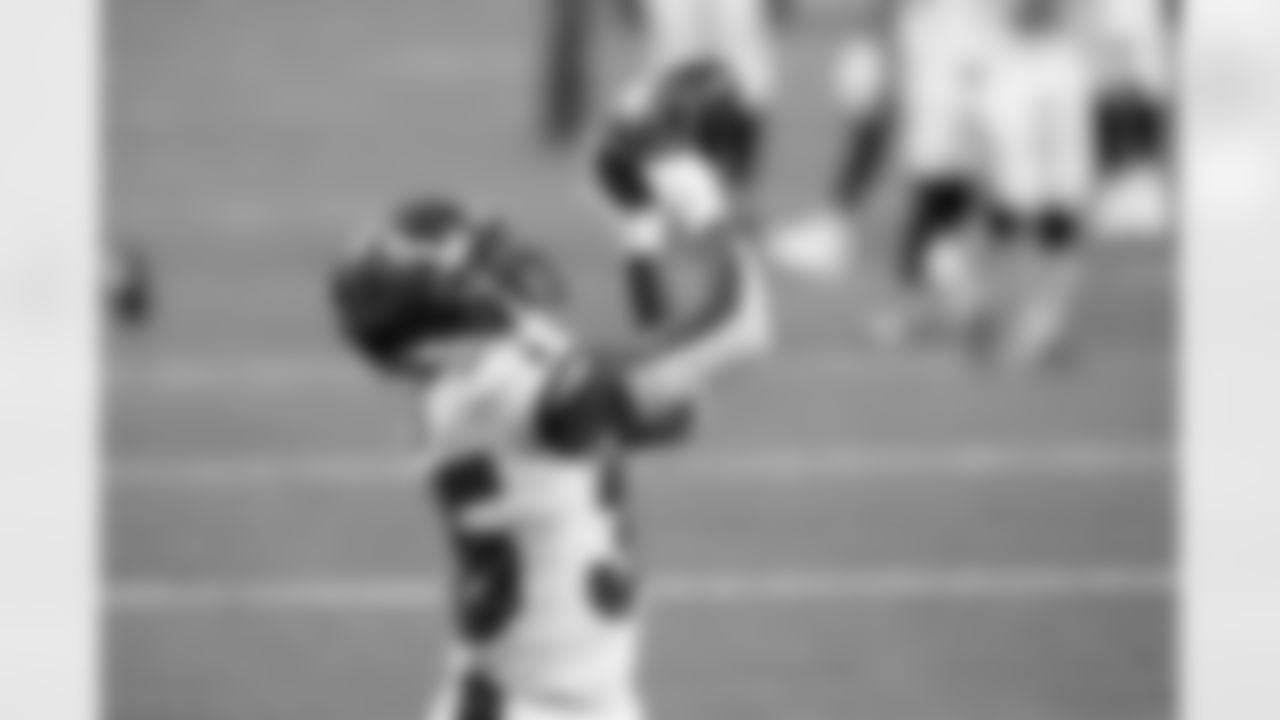
CB Jamel Dean
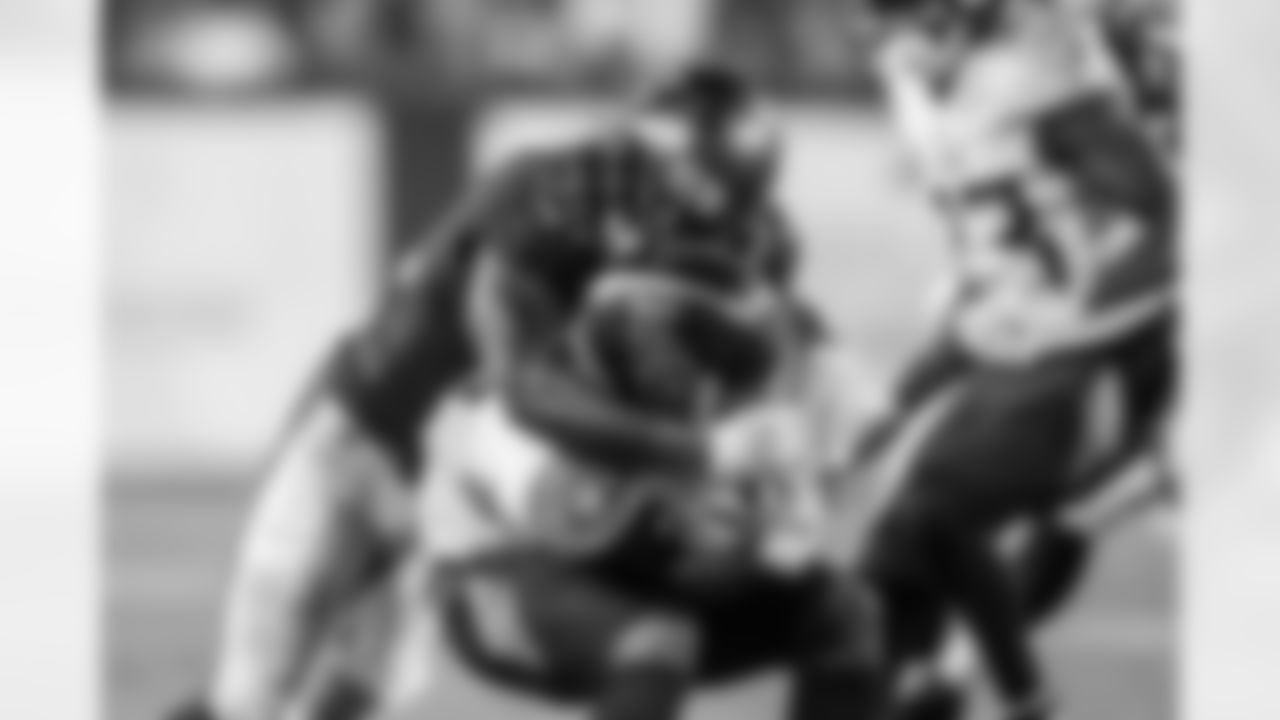
CB Dee Delaney

CB Pierre Desir
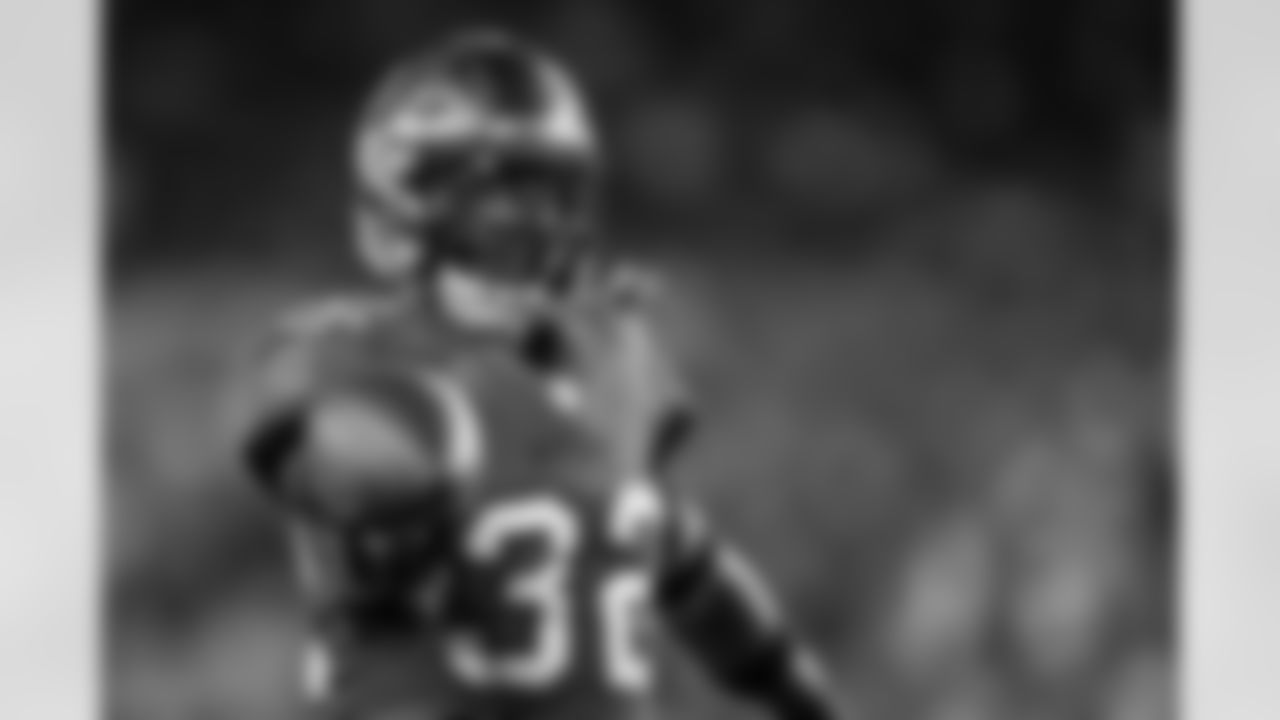
S Mike Edwards
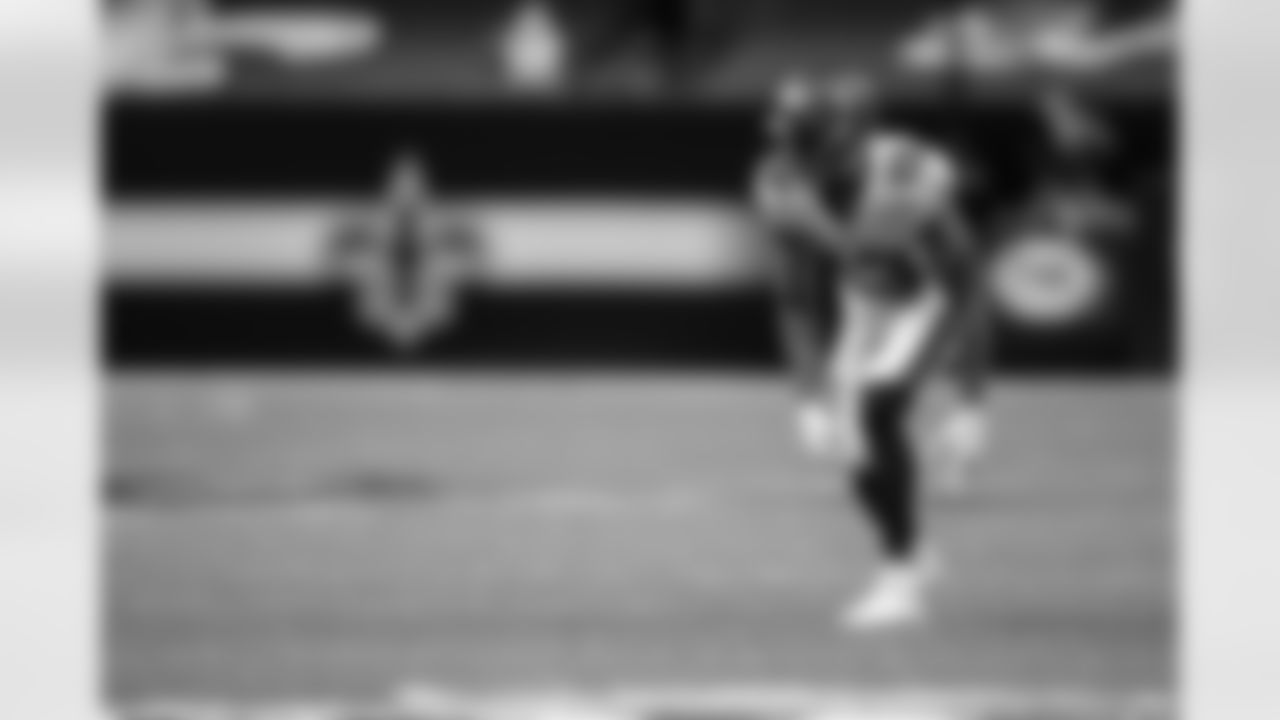
WR Mike Evans
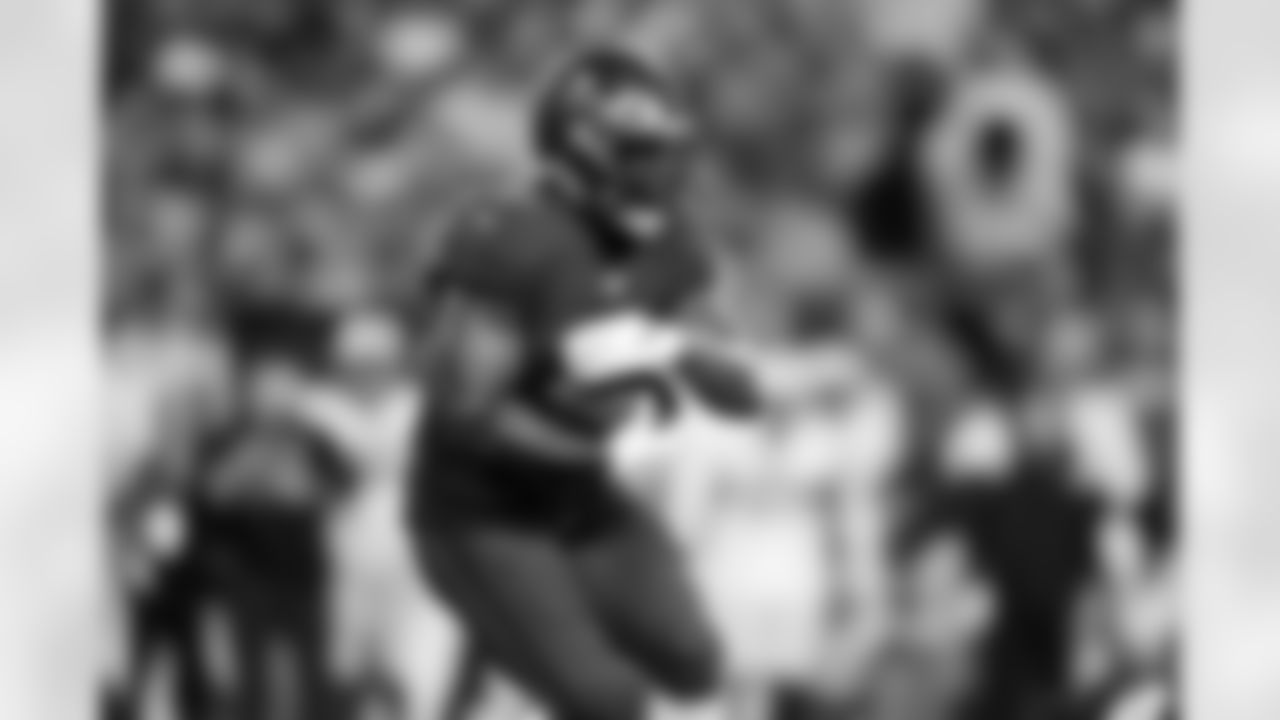
RB Leonard Fournette

QB Blaine Gabbert

DL William Gholston

OLB Cam Gill
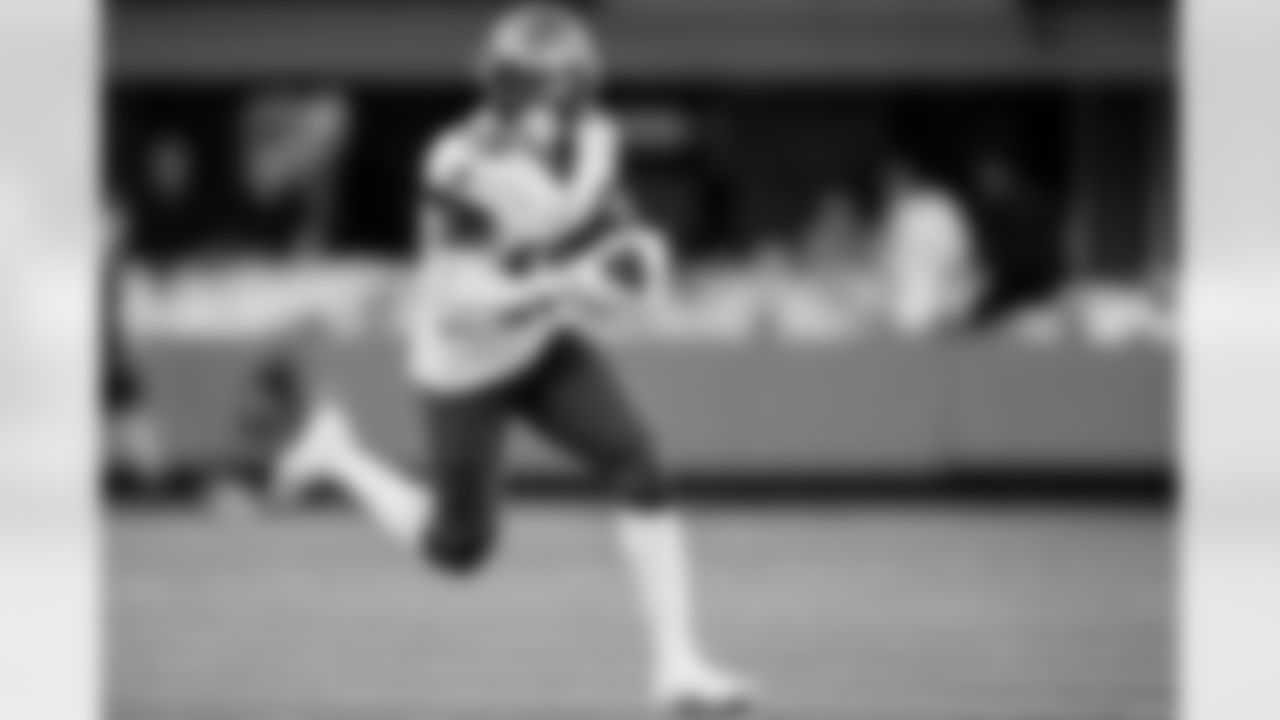
WR Cyril Grayson Jr.

TE Rob Gronkowski

OL Robert Hainsey

TE O.J. Howard

C Ryan Jensen

WR Tyler Johnson

RB Ronald Jones II
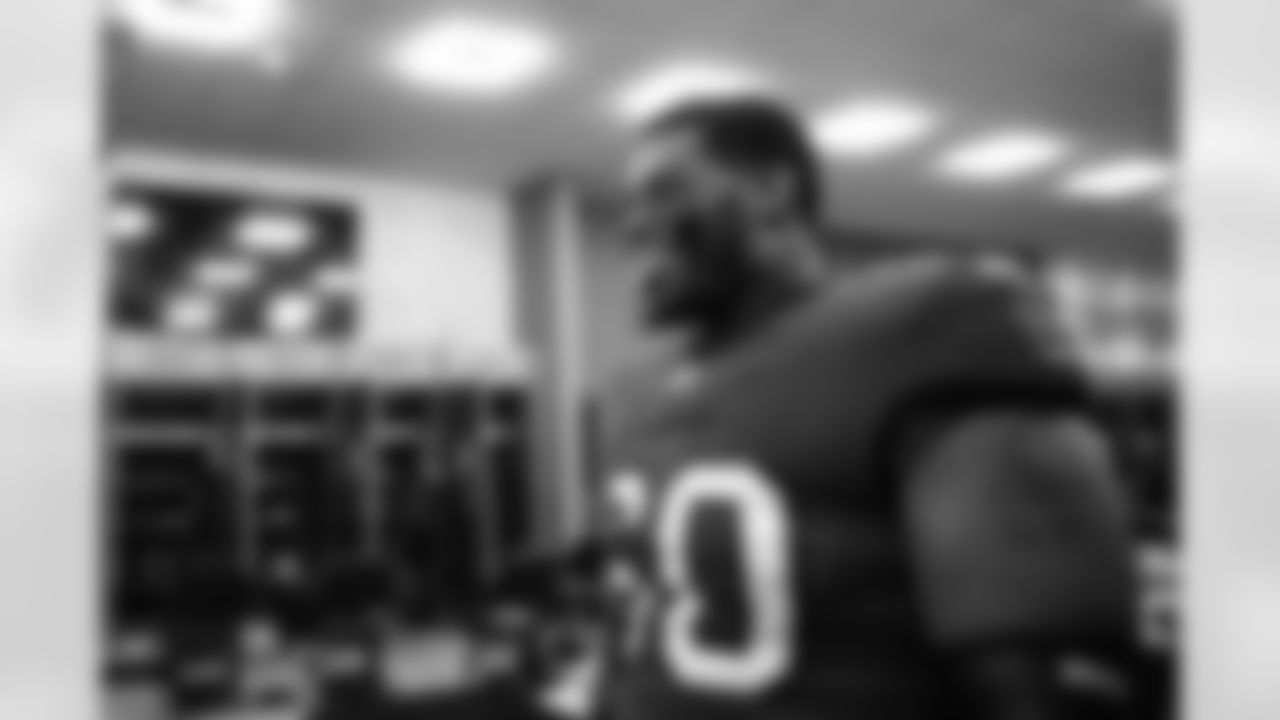
G Nick Leverett

G Ali Marpet

DT Steve McLendon

WR Scotty Miller

ILB Kevin Minter

CB Sean Murphy-Bunting

OLB Anthony Nelson
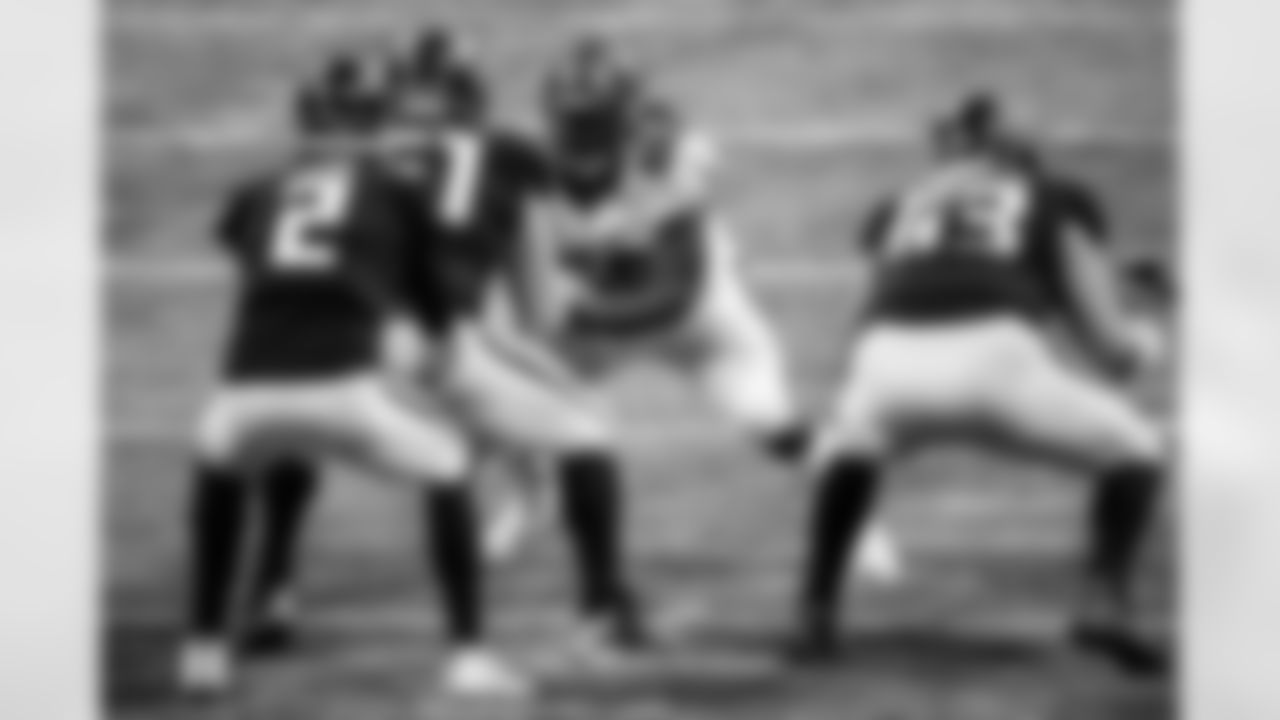
DT Rakeem Nunez-Roches
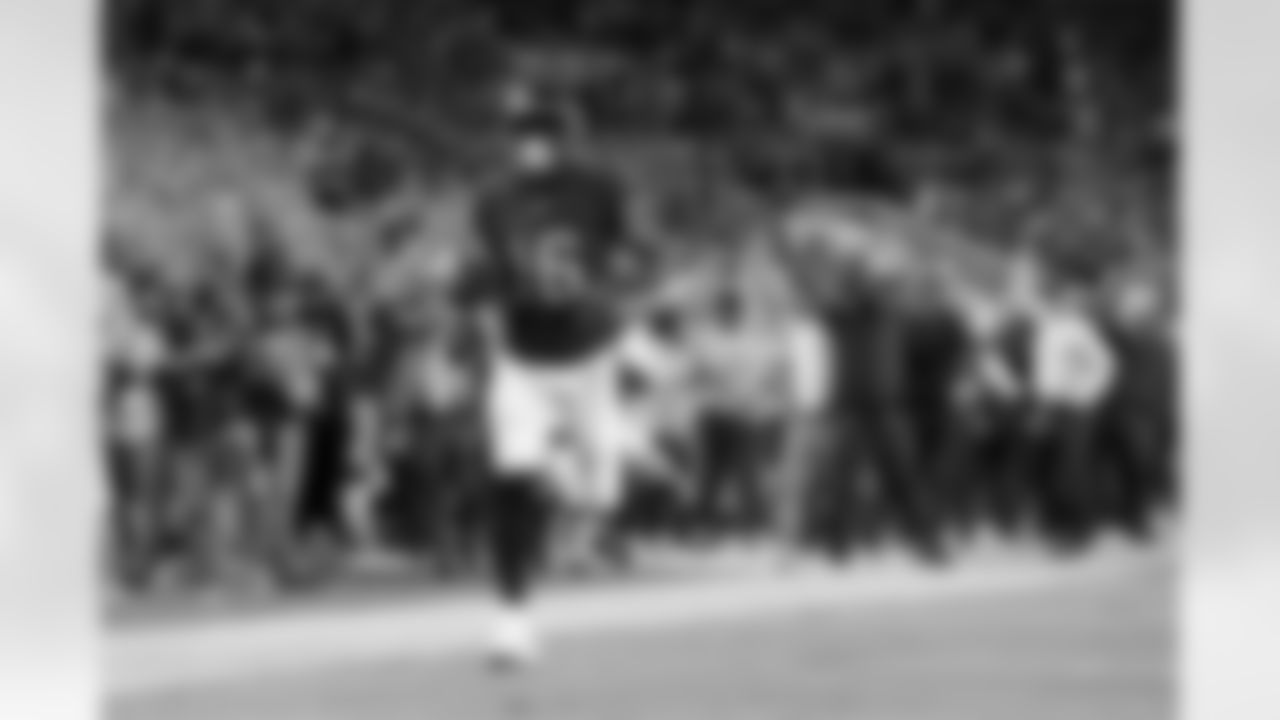
WR Breshad Perriman

OLB Jason Pierre-Paul

P Bradley Pinion

CB Rashard Robinson

OT Donovan Smith

G Aaron Stinnie

ILB Grant Stuard

K Ryan Succop
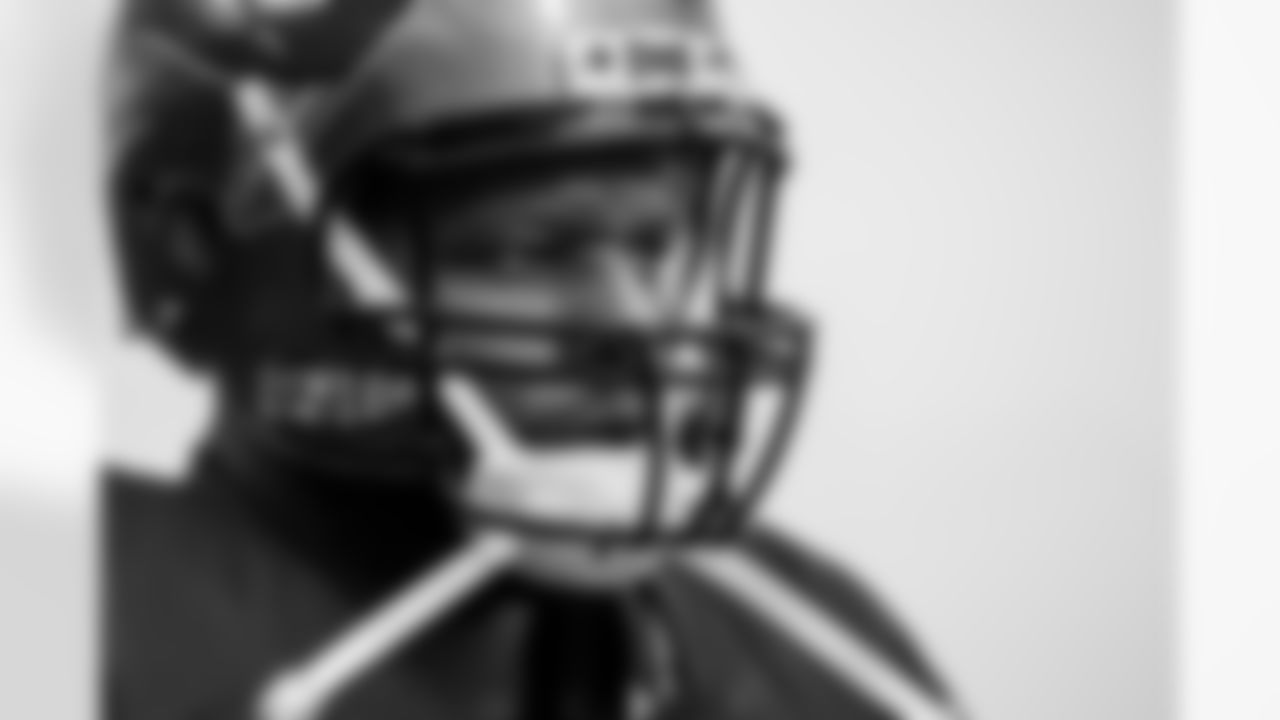
DL Ndamukong Suh
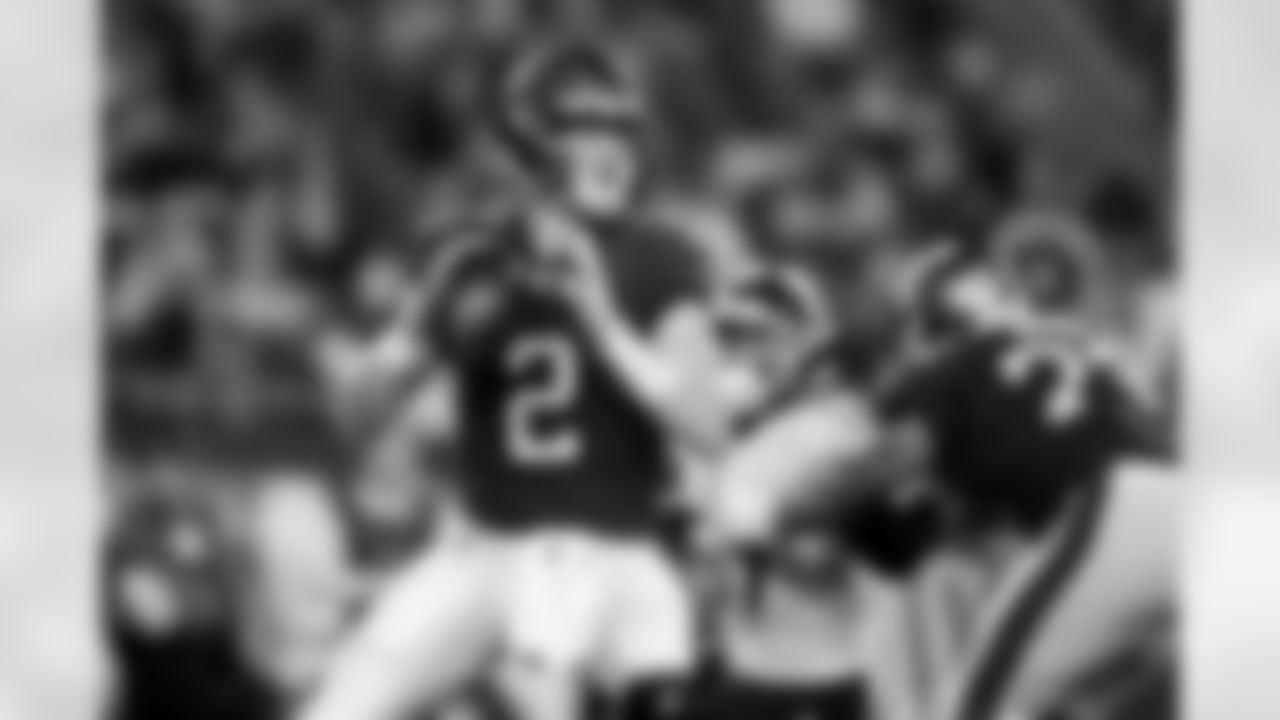
QB Kyle Trask

LS Zach Triner
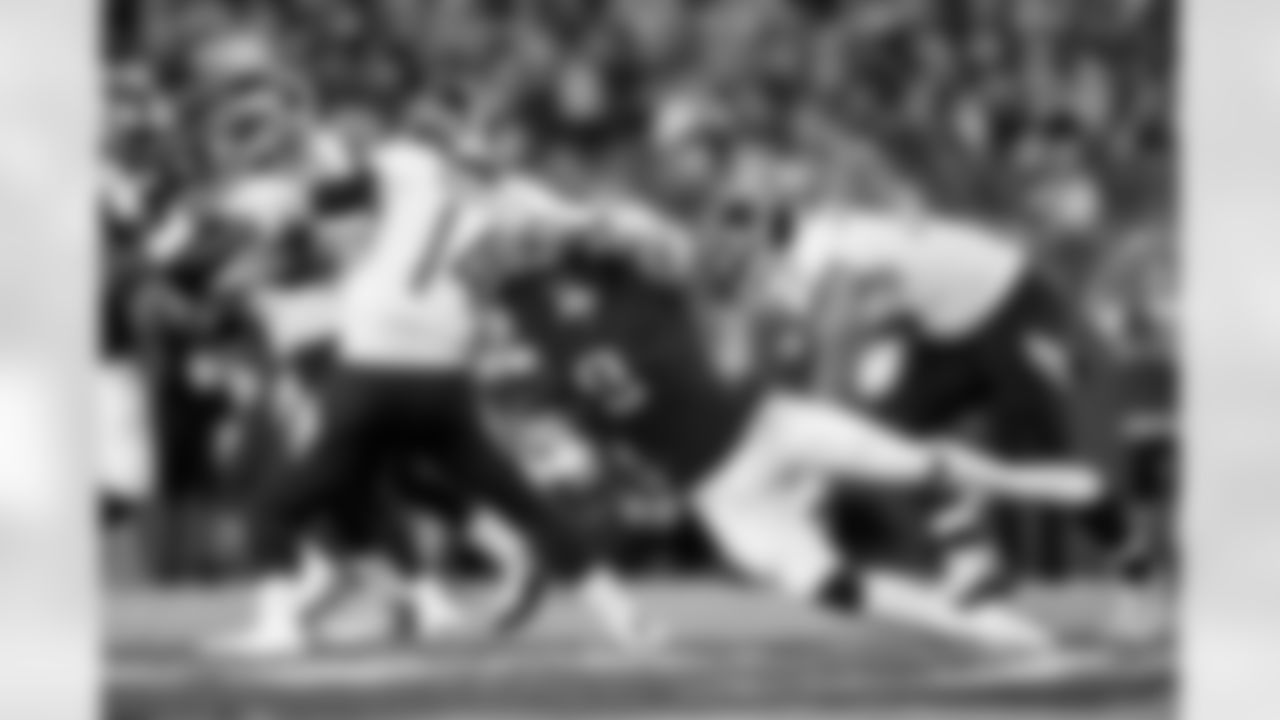
OLB Joe Tryon-Shoyinka

RB Ke'Shawn Vaughn
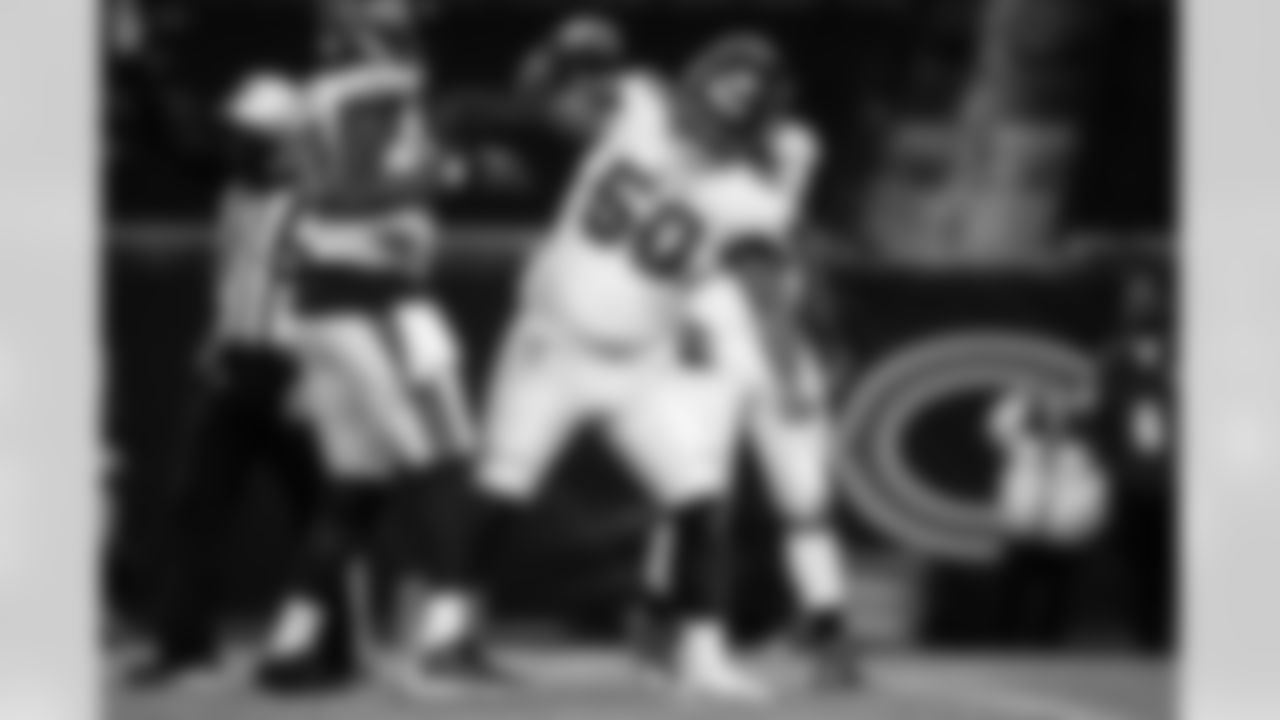
DT Vita Vea

WR Justin Watson

OT Josh Wells
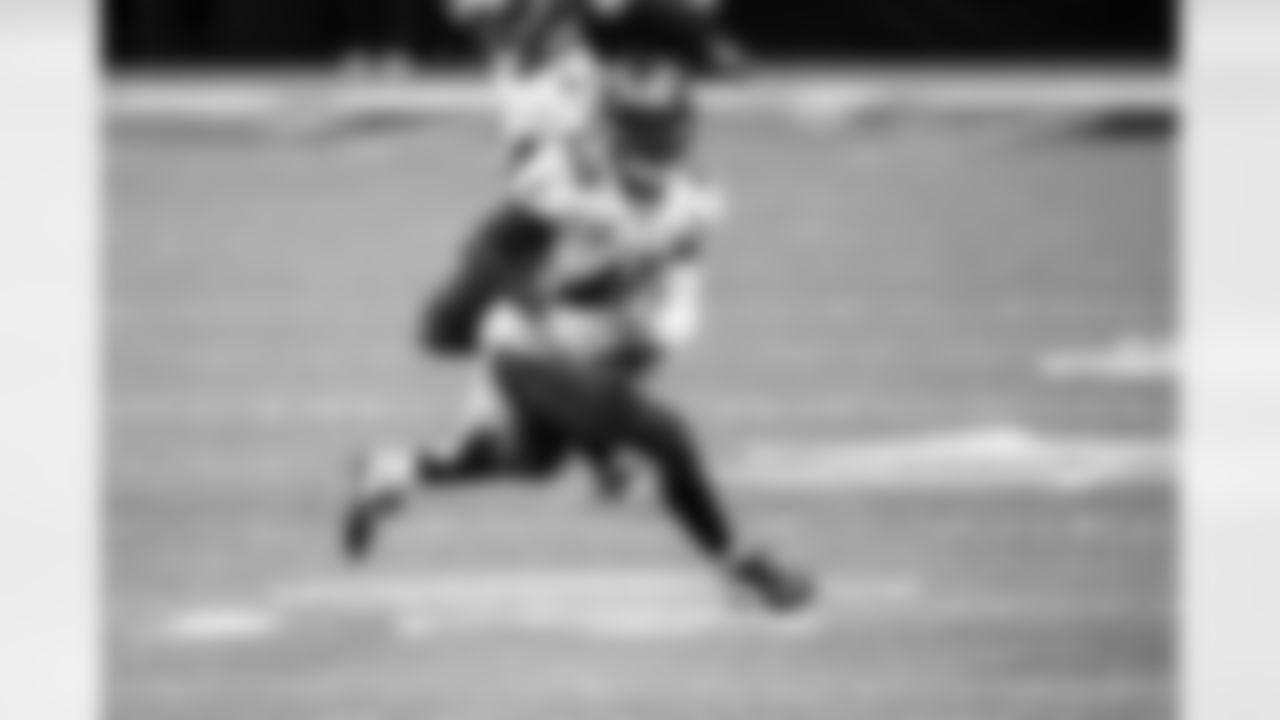
ILB Devin White

S Jordan Whitehead

S Antoine Winfield Jr.
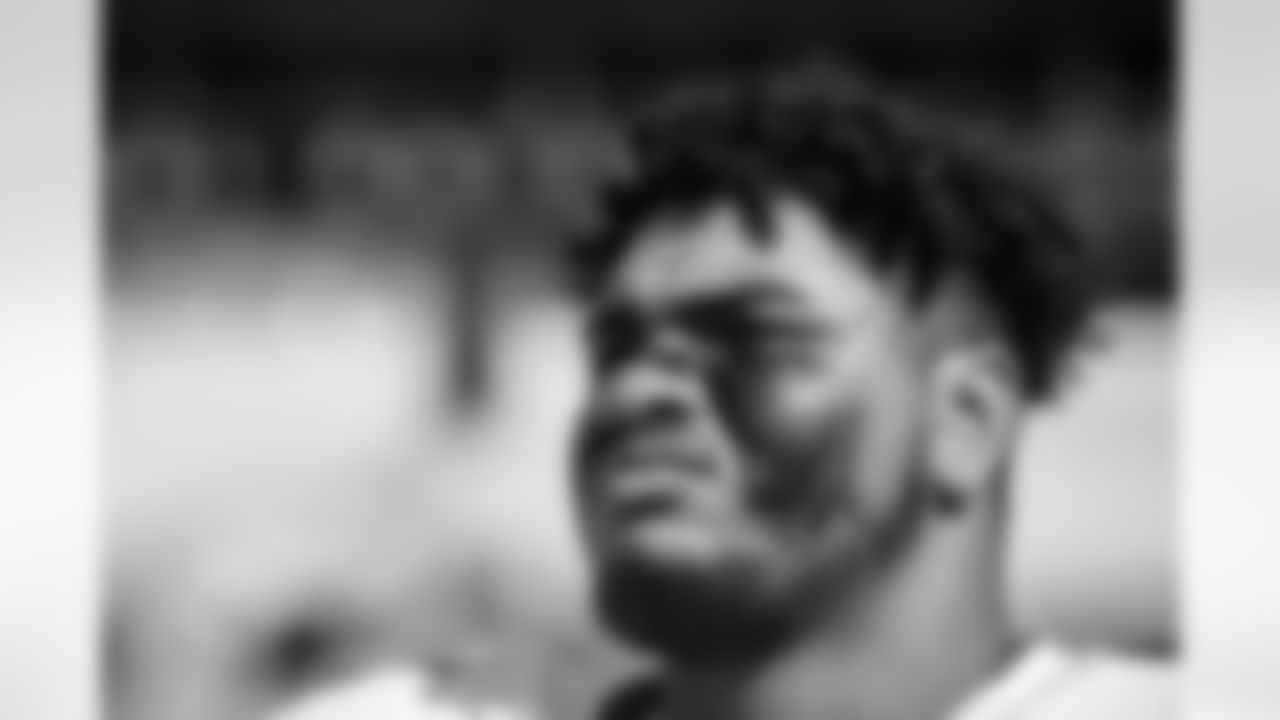
T Tristan Wirfs
In one respect, the answer is easy. Wilder is the all-time leader among Buccaneer backs with 430 receptions and 3,492 receiving yards. In fact, Wilder was the franchise's career leader in receptions for players at any position from the middle of 1985 until Mike Evans finally surpassed him last year. Wilder's 85 receptions in 1984 also remain the team's single-season standard.
Dunn finished with 306 catches and 2,704 yards as a Buc. Alstott was right behind at 305 and 2,284. They are the fourth and fifth-leading pass-catchers in team history. Pittman got to 284 grabs and actually is a bit ahead of Alstott with 2,361 yards. He's eighth on the franchise catch list.
Can we make arguments for any of those three over Wilder? Well, Dunn was the best per-catch, with an average of 8.8 yards, followed by Pittman (8.3), putting Wilder third (8.1). That suggests that Dunn might have been the most explosive player of the three with the ball in his hands. Alstott, unsurprisingly, was the best at turning his catches into touchdowns, with 13 to nine for both Wilder and Dunn. Wilder and Dunn both had three 100-yard receiving games.
It's worth noting that Wilder played nine seasons for Tampa Bay, as compared to six each for Dunn and Pittman. (Alstott had 11 glorious Buc seasons.) On a per-season basis, Dunn actually tops both lists with 51.0 receptions and 450.7 yards. Wilder and Pittman are very close to each other; the former averaged 47.8 catches and 388.0 yards per Buc campaign, the latter averaged 47.3 and 393.5. Alstott is well below the rest.
On the other hand, the difference in games played between Wilder and the Dunn/Pittman duo isn't as much as you would think. Wilder appeared in 113 games as a Buccaneer, compared to 90 for Dunn and 87 for Pittman. If we look at their per-game averages, Wilder retakes the top spot, albeit not by much. He averaged 3.8 catches and 30.9 receiving yards per contest as a Buccaneer while Dunn averaged 3.4 and 29.7, just ahead of Pittman's 3.3 and 27.1.
Based on all of that, I think you could make a case for Dunn over Wilder as the best pass-catching back in team history. I think Dunn was probably the shiftier, more electric player. However, I am probably showing my bias as I saw Dunn's entire Buccaneer career in person and have only seen highlights of Wilder, and not too many of those. Dunn has a case, but Wilder's sheer volume and long run as the team's all-time receptions leader should probably keep him in the top spot.
Now on to your questions for this week.
A reminder that you can send questions to me anytime you want on Twitter (@ScottSBucs) and they're easier to find if you include the hashtag #SSMailbagBucs. We are also now soliciting questions each week on our Instagram page; look for that story on Wednesdays. As always, if you want to get a longer question into the mailbag and would prefer to email your question, you can do so to tbbsocial@buccaneers.nfl.com.
View some of the photos from Buccaneers Training Camp practice at the AdventHealth Training Center.

TAMPA, FL - AUGUST 10, 2020 - Running Back Raymond Calais #43 of the Tampa Bay Buccaneers during day 7 of 2020 Training Camp practice at AdventHealth Training Center. Photo By Tori Richman/Tampa Bay Buccaneers

TAMPA, FL - AUGUST 10, 2020 - Quarterback Tom Brady #12 of the Tampa Bay Buccaneers during day 7 of 2020 Training Camp practice at AdventHealth Training Center. Photo By Tori Richman/Tampa Bay Buccaneers

TAMPA, FL - AUGUST 10, 2020 - Running Back LeSean McCoy #25 of the Tampa Bay Buccaneers during day 7 of 2020 Training Camp practice at AdventHealth Training Center. Photo By Tori Richman/Tampa Bay Buccaneers

TAMPA, FL - AUGUST 10, 2020 - Wide Receiver Mike Evans #13 of the Tampa Bay Buccaneers during day 7 of 2020 Training Camp practice at AdventHealth Training Center. Photo By Tori Richman/Tampa Bay Buccaneers

TAMPA, FL - AUGUST 10, 2020 - Tight End Cameron Brate #84 of the Tampa Bay Buccaneers during day 7 of 2020 Training Camp practice at AdventHealth Training Center. Photo By Tori Richman/Tampa Bay Buccaneers

TAMPA, FL - AUGUST 10, 2020 - Wide Receiver Jaydon Mickens #85 of the Tampa Bay Buccaneers during day 7 of 2020 Training Camp practice at AdventHealth Training Center. Photo By Tori Richman/Tampa Bay Buccaneers

TAMPA, FL - AUGUST 10, 2020 - Tight End Rob Gronkowski #87 of the Tampa Bay Buccaneers during day 7 of 2020 Training Camp practice at AdventHealth Training Center. Photo By Tori Richman/Tampa Bay Buccaneers

TAMPA, FL - AUGUST 10, 2020 - Running Back T.J. Logan #22 of the Tampa Bay Buccaneers during day 7 of 2020 Training Camp practice at AdventHealth Training Center. Photo By Tori Richman/Tampa Bay Buccaneers

TAMPA, FL - AUGUST 10, 2020 - Wide Receiver Jaydon Mickens #85 of the Tampa Bay Buccaneers during day 7 of 2020 Training Camp practice at AdventHealth Training Center. Photo By Tori Richman/Tampa Bay Buccaneers

TAMPA, FL - AUGUST 10, 2020 - Wide Receiver Mike Evans #13 of the Tampa Bay Buccaneers during day 7 of 2020 Training Camp practice at AdventHealth Training Center. Photo By Tori Richman/Tampa Bay Buccaneers

TAMPA, FL - AUGUST 10, 2020 - Running Back Raymond Calais #43 of the Tampa Bay Buccaneers during day 7 of 2020 Training Camp practice at AdventHealth Training Center. Photo By Tori Richman/Tampa Bay Buccaneers

TAMPA, FL - AUGUST 10, 2020 - Wide Receiver John Franklin #5 of The Tampa Bay Buccaneers during day 7 of 2020 Training Camp practice at AdventHealth Training Center. Photo By Tori Richman/Tampa Bay Buccaneers

TAMPA, FL - AUGUST 10, 2020 - Running Back T.J. Logan #22 of the Tampa Bay Buccaneers during day 7 of 2020 Training Camp practice at AdventHealth Training Center. Photo By Tori Richman/Tampa Bay Buccaneers

TAMPA, FL - AUGUST 10, 2020 - Running Back LeSean McCoy #25 of the Tampa Bay Buccaneers during day 7 of 2020 Training Camp practice at AdventHealth Training Center. Photo By Tori Richman/Tampa Bay Buccaneers

TAMPA, FL - AUGUST 10, 2020 - Tight End O.J. Howard #80 and Tight End Rob Gronkowski #87 of the Tampa Bay Buccaneers during day 7 of 2020 Training Camp practice at AdventHealth Training Center. Photo By Tori Richman/Tampa Bay Buccaneers

TAMPA, FL - AUGUST 10, 2020 - Tight End Rob Gronkowski #87 of the Tampa Bay Buccaneers during day 7 of 2020 Training Camp practice at AdventHealth Training Center. Photo By Tori Richman/Tampa Bay Buccaneers

TAMPA, FL - AUGUST 10, 2020 - Tight End Antony Auclair #82 of the Tampa Bay Buccaneers during day 7 of 2020 Training Camp practice at AdventHealth Training Center. Photo By Tori Richman/Tampa Bay Buccaneers

TAMPA, FL - AUGUST 10, 2020 - Tight End Rob Gronkowski #87 of the Tampa Bay Buccaneers during day 7 of 2020 Training Camp practice at AdventHealth Training Center. Photo By Tori Richman/Tampa Bay Buccaneers

TAMPA, FL - AUGUST 10, 2020 - Wide Receiver John Franklin #5 of The Tampa Bay Buccaneers during day 7 of 2020 Training Camp practice at AdventHealth Training Center. Photo By Tori Richman/Tampa Bay Buccaneers

TAMPA, FL - AUGUST 10, 2020 - Quarterback Tom Brady #12 of the Tampa Bay Buccaneers during day 7 of 2020 Training Camp practice at AdventHealth Training Center. Photo By Tori Richman/Tampa Bay Buccaneers

TAMPA, FL - AUGUST 10, 2020 - Tight End Antony Auclair #82 of the Tampa Bay Buccaneers during day 7 of 2020 Training Camp practice at AdventHealth Training Center. Photo By Tori Richman/Tampa Bay Buccaneers

TAMPA, FL - AUGUST 10, 2020 - Wide Receiver John Hurst #6 of the Tampa Bay Buccaneers during day 7 of 2020 Training Camp practice at AdventHealth Training Center. Photo By Tori Richman/Tampa Bay Buccaneers

TAMPA, FL - AUGUST 10, 2020 - Wide Receiver Bryant Mitchell #16 of the Tampa Bay Buccaneers during day 7 of 2020 Training Camp practice at AdventHealth Training Center. Photo By Tori Richman/Tampa Bay Buccaneers
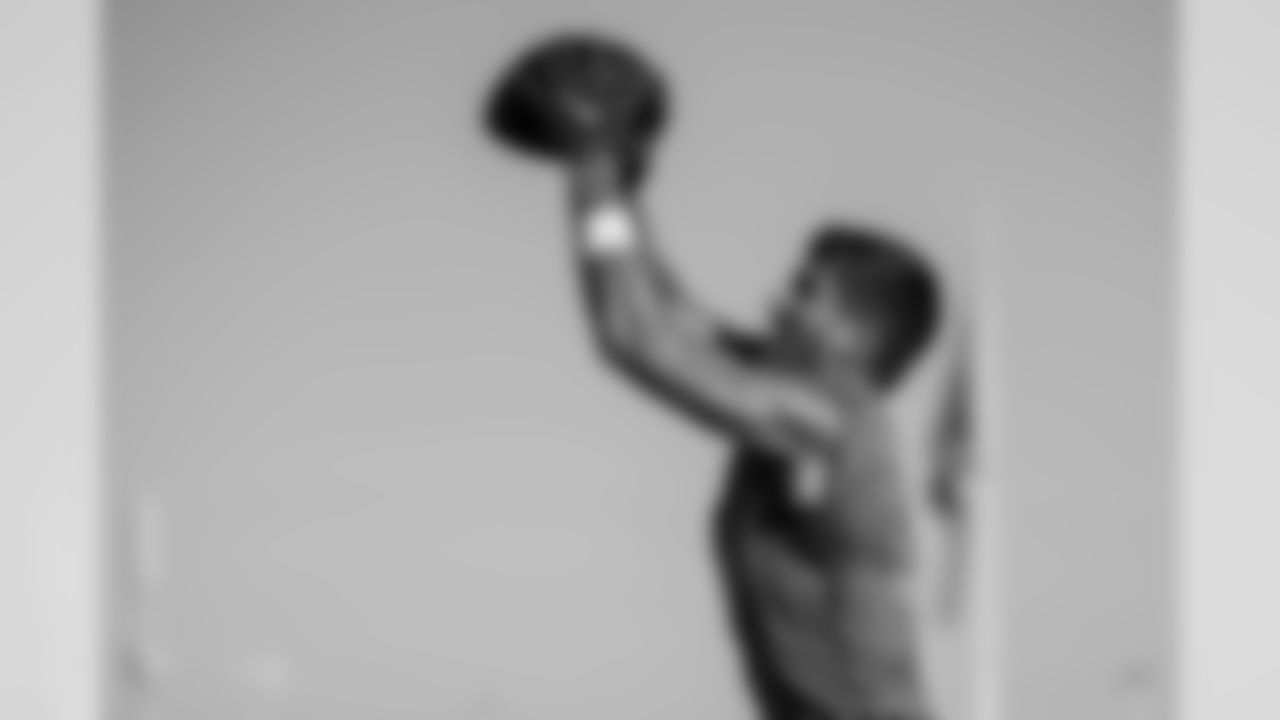
TAMPA, FL - AUGUST 10, 2020 - Wide Receiver Justin Watson #17 of the Tampa Bay Buccaneers during day 7 of 2020 Training Camp practice at AdventHealth Training Center. Photo By Tori Richman/Tampa Bay Buccaneers

TAMPA, FL - AUGUST 10, 2020 - Running Back Ronald Jones II #27 of the Tampa Bay Buccaneers during day 7 of 2020 Training Camp practice at AdventHealth Training Center. Photo By Tori Richman/Tampa Bay Buccaneers

TAMPA, FL - AUGUST 10, 2020 - Wide Receiver Mike Evans #13 of the Tampa Bay Buccaneers during day 7 of 2020 Training Camp practice at AdventHealth Training Center. Photo By Tori Richman/Tampa Bay Buccaneers
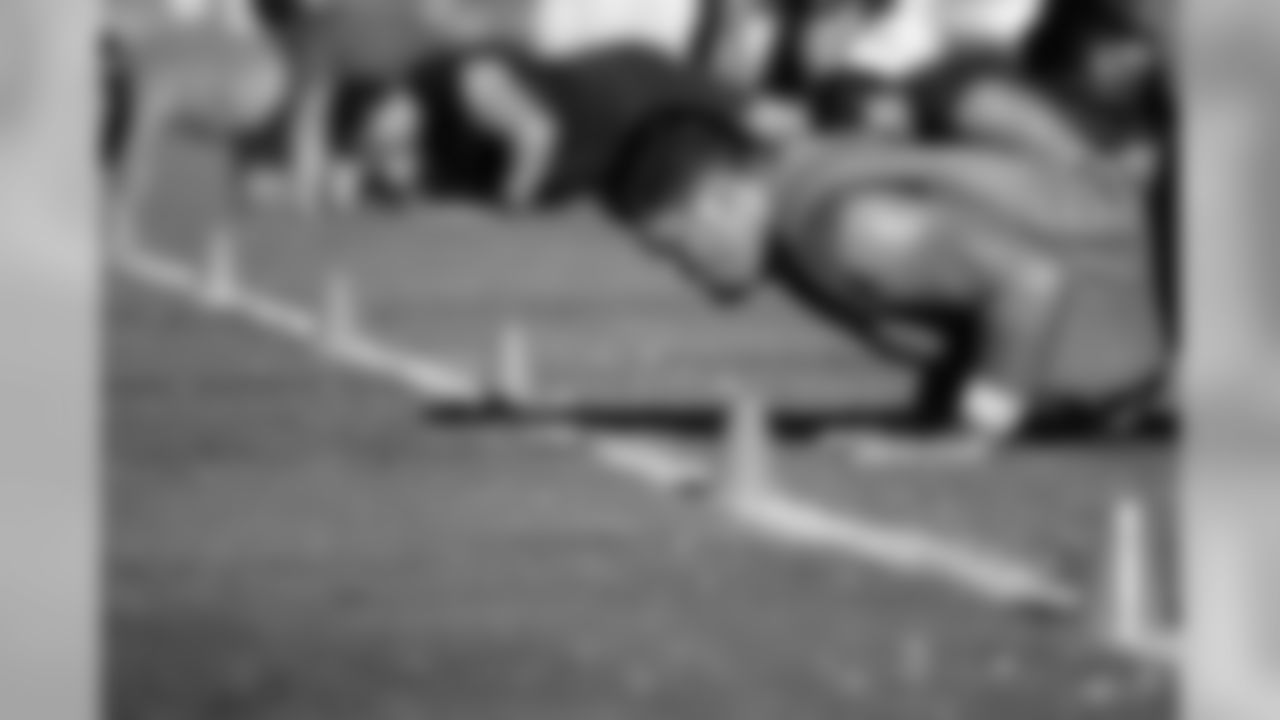
TAMPA, FL - AUGUST 10, 2020 - Offensive Tackle Josh Wells #72 of the Tampa Bay Buccaneers during day 7 of 2020 Training Camp practice at AdventHealth Training Center. Photo By Tori Richman/Tampa Bay Buccaneers
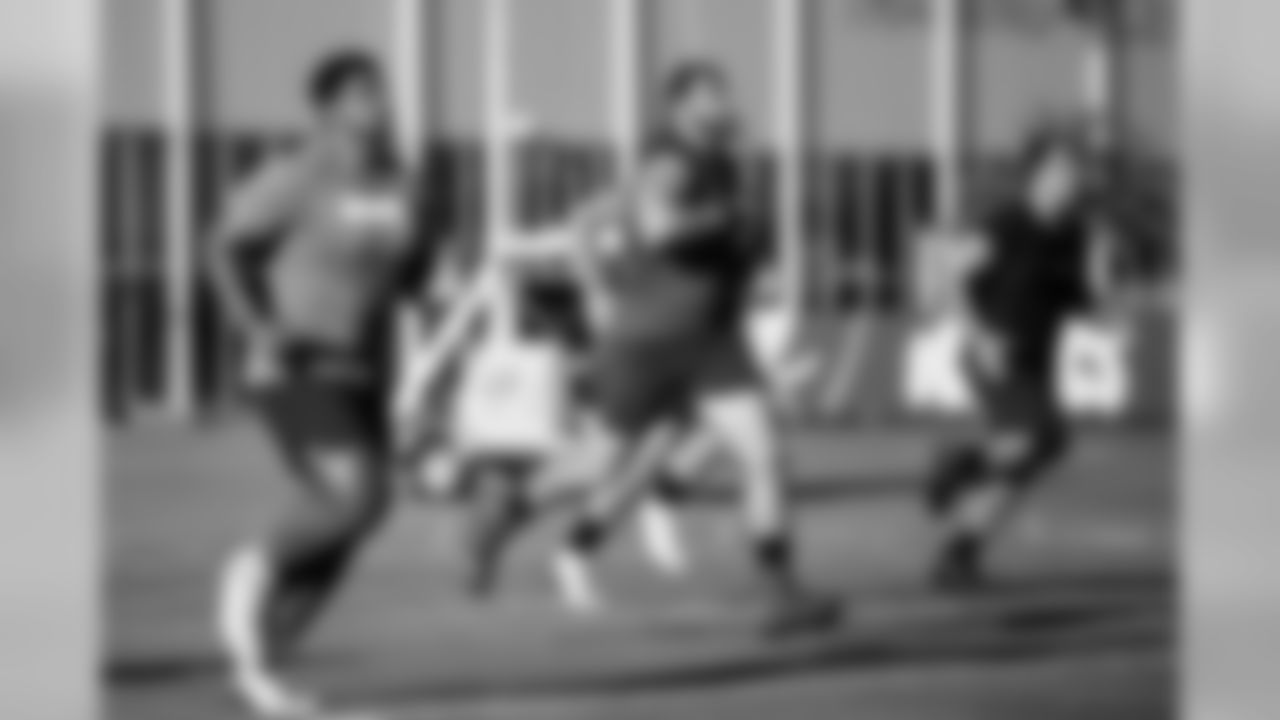
TAMPA, FL - AUGUST 10, 2020 - Guard Zack Bailey #61 of the Tampa Bay Buccaneers during day 7 of 2020 Training Camp practice at AdventHealth Training Center. Photo By Tori Richman/Tampa Bay Buccaneers

TAMPA, FL - AUGUST 10, 2020 - Tackle Joe Haeg #73 of the Tampa Bay Buccaneers during day 7 of 2020 Training Camp practice at AdventHealth Training Center. Photo By Tori Richman/Tampa Bay Buccaneers

TAMPA, FL - AUGUST 10, 2020 - Center Zach Shackelford #59 of the Tampa Bay Buccaneers during day 7 of 2020 Training Camp practice at AdventHealth Training Center. Photo By Tori Richman/Tampa Bay Buccaneers

TAMPA, FL - AUGUST 10, 2020 - Tackle Joe Haeg #73 of the Tampa Bay Buccaneers during day 7 of 2020 Training Camp practice at AdventHealth Training Center. Photo By Tori Richman/Tampa Bay Buccaneers

TAMPA, FL - AUGUST 10, 2020 - Guard Alex Cappa #65 of the Tampa Bay Buccaneers during day 7 of 2020 Training Camp practice at AdventHealth Training Center. Photo By Tori Richman/Tampa Bay Buccaneers

TAMPA, FL - AUGUST 10, 2020 - Guard Nick Leverett #60 of the Tampa Bay Buccaneers during day 7 of 2020 Training Camp practice at AdventHealth Training Center. Photo By Tori Richman/Tampa Bay Buccaneers

TAMPA, FL - AUGUST 10, 2020 - Guard John Molchon #75 of the Tampa Bay Buccaneers during day 7 of 2020 Training Camp practice at AdventHealth Training Center. Photo By Tori Richman/Tampa Bay Buccaneers

TAMPA, FL - AUGUST 10, 2020 - Cornerback Carlton Davis #24 of the Tampa Bay Buccaneers during day 7 of 2020 Training Camp practice at AdventHealth Training Center. Photo By Tori Richman/Tampa Bay Buccaneers
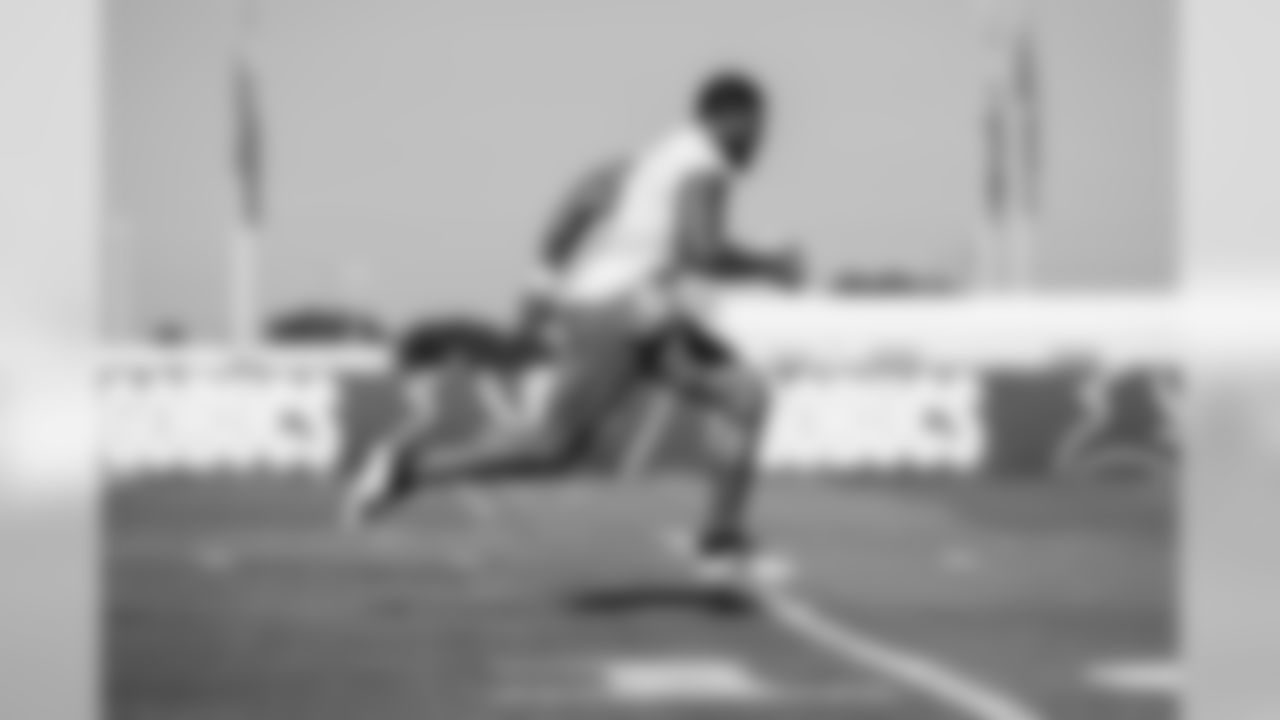
TAMPA, FL - AUGUST 10, 2020 - Safety Andrew Adams #26 of the Tampa Bay Buccaneers during day 7 of 2020 Training Camp practice at AdventHealth Training Center. Photo By Tori Richman/Tampa Bay Buccaneers

TAMPA, FL - AUGUST 10, 2020 - Safety Andrew Adams #26 of the Tampa Bay Buccaneers during day 7 of 2020 Training Camp practice at AdventHealth Training Center. Photo By Tori Richman/Tampa Bay Buccaneers

TAMPA, FL - AUGUST 10, 2020 - Safety Javon Hagan #25 of the Tampa Bay Buccaneers during day 7 of 2020 Training Camp practice at AdventHealth Training Center. Photo By Tori Richman/Tampa Bay Buccaneers

TAMPA, FL - AUGUST 10, 2020 - Cornerback Ryan Smith #29 of the Tampa Bay Buccaneers during day 7 of 2020 Training Camp practice at AdventHealth Training Center. Photo By Tori Richman/Tampa Bay Buccaneers

TAMPA, FL - AUGUST 10, 2020 - Cornerback Jamel Dean #35 of the Tampa Bay Buccaneers during day 7 of 2020 Training Camp practice at AdventHealth Training Center. Photo By Tori Richman/Tampa Bay Buccaneers

TAMPA, FL - AUGUST 10, 2020 - Defensive Lineman Khalil Davis #94 of the Tampa Bay Buccaneers during day 7 of 2020 Training Camp practice at AdventHealth Training Center. Photo By Tori Richman/Tampa Bay Buccaneers
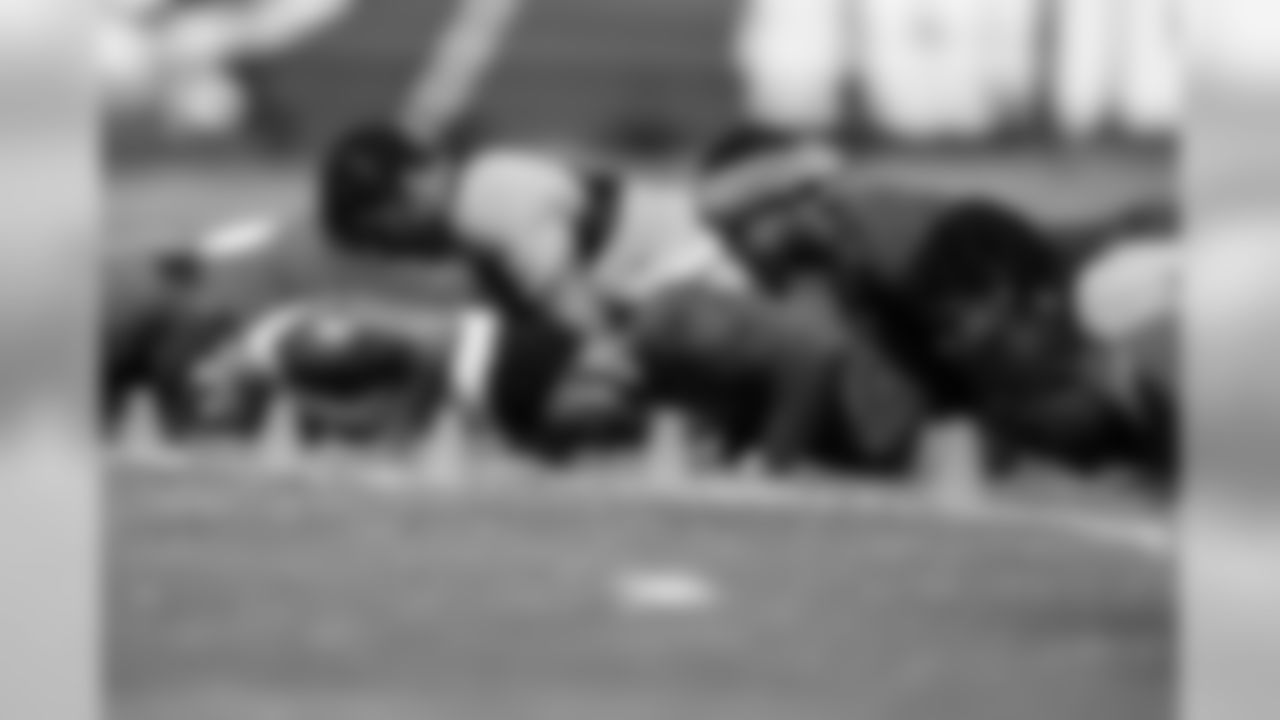
TAMPA, FL - AUGUST 10, 2020 - Outside Linebacker Michael Divinity #46 of the Tampa Bay Buccaneers during day 7 of 2020 Training Camp practice at AdventHealth Training Center. Photo By Tori Richman/Tampa Bay Buccaneers

TAMPA, FL - AUGUST 10, 2020 - Defensive Tackle Vita Vea #50 of the Tampa Bay Buccaneers during day 7 of 2020 Training Camp practice at AdventHealth Training Center. Photo By Tori Richman/Tampa Bay Buccaneers
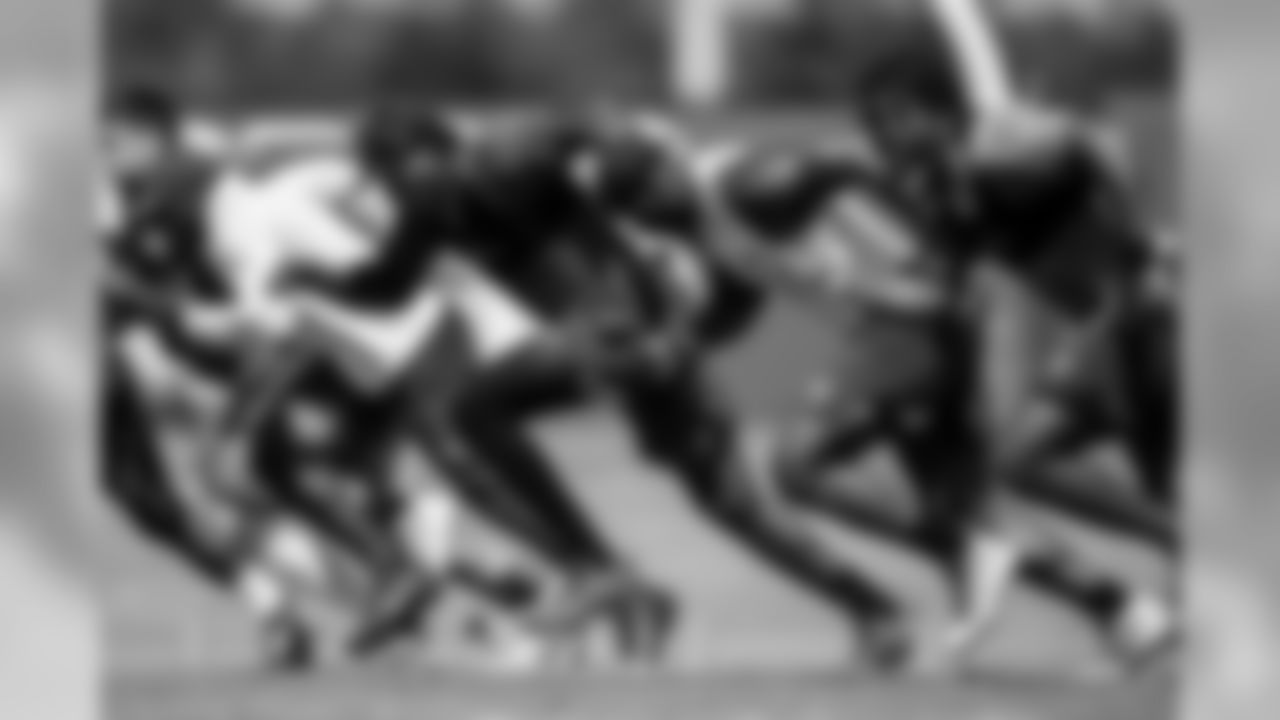
TAMPA, FL - AUGUST 10, 2020 - Outside Linebacker Jason Pierre-Paul #90 of the Tampa Bay Buccaneers during day 7 of 2020 Training Camp practice at AdventHealth Training Center. Photo By Tori Richman/Tampa Bay Buccaneers
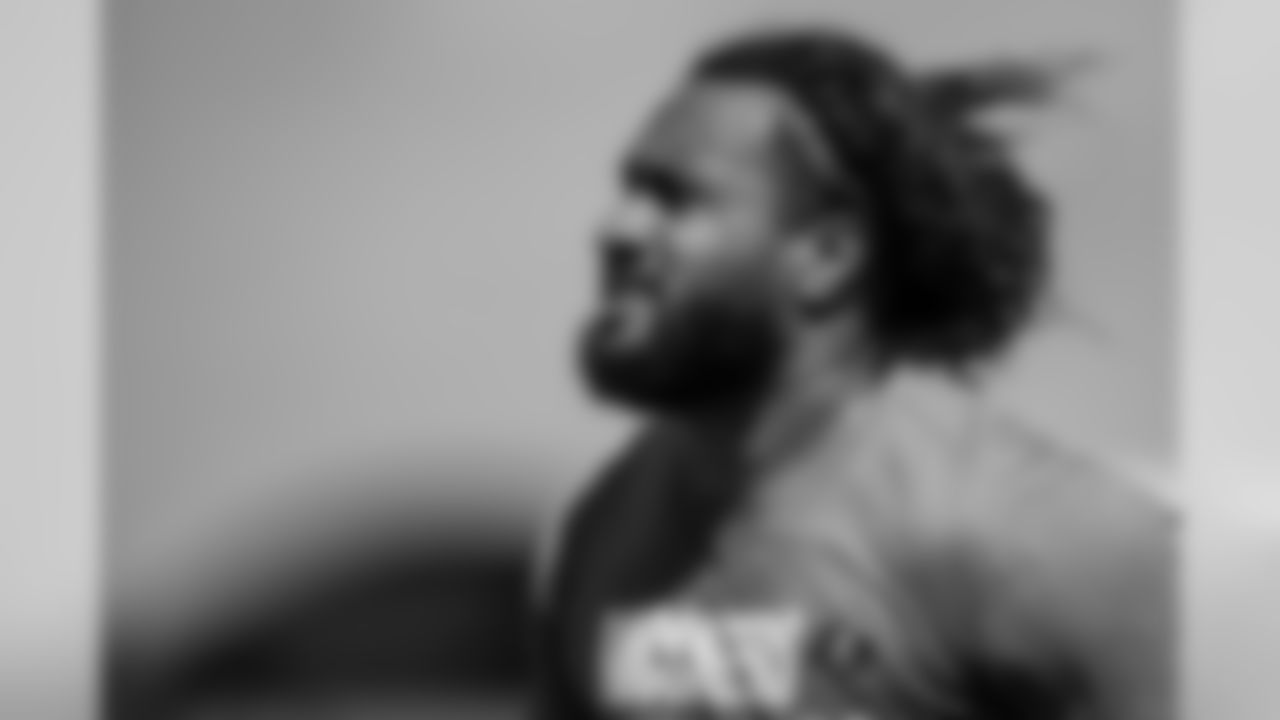
TAMPA, FL - AUGUST 10, 2020 - Defensive Lineman Benning Potoa'e #91 of the Tampa Bay Buccaneers during day 7 of 2020 Training Camp practice at AdventHealth Training Center. Photo By Tori Richman/Tampa Bay Buccaneers

TAMPA, FL - AUGUST 10, 2020 - Defensive Lineman Patrick O'Connor #79 of the Tampa Bay Buccaneers during day 7 of 2020 Training Camp practice at AdventHealth Training Center. Photo By Tori Richman/Tampa Bay Buccaneers
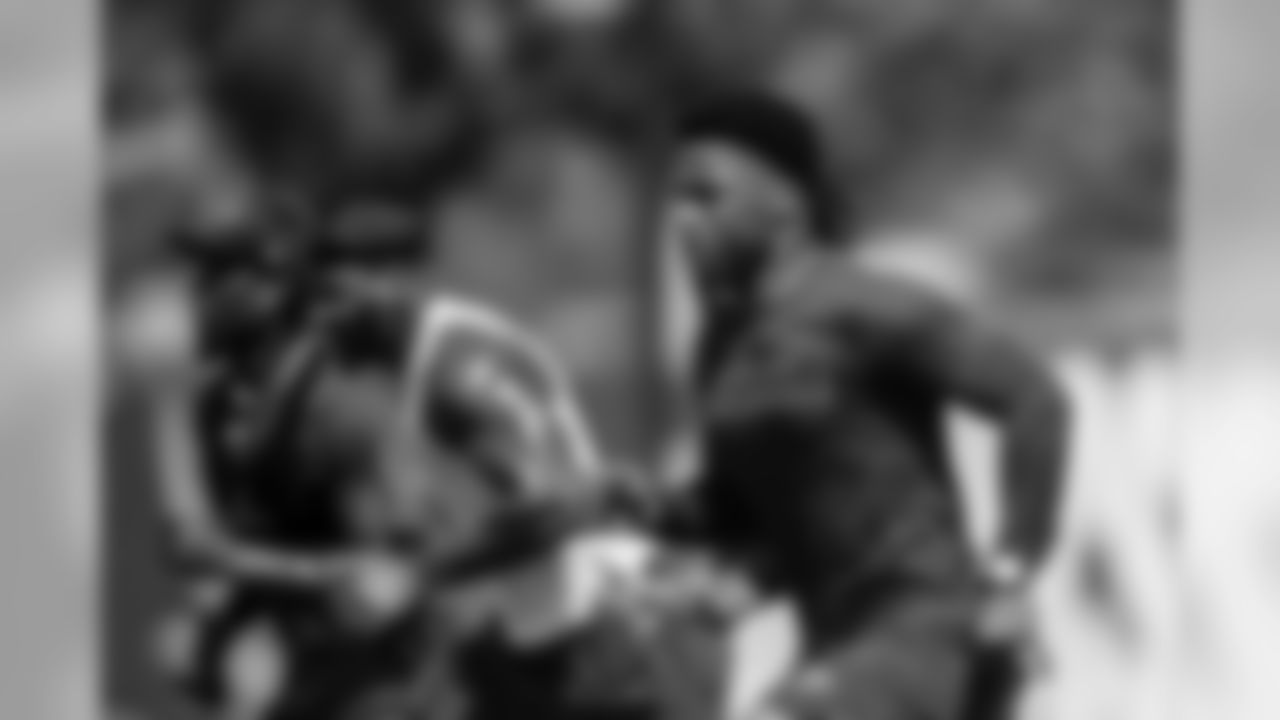
TAMPA, FL - AUGUST 10, 2020 - Outside Linebacker Chapelle Russell #53 of the Tampa Bay Buccaneers during day 7 of 2020 Training Camp practice at AdventHealth Training Center. Photo By Tori Richman/Tampa Bay Buccaneers

TAMPA, FL - AUGUST 10, 2020 - Outside Linebacker Shaquil Barrett #58 of the Tampa Bay Buccaneers during day 7 of 2020 Training Camp practice at AdventHealth Training Center. Photo By Tori Richman/Tampa Bay Buccaneers

TAMPA, FL - AUGUST 10, 2020 - Outside Linebacker Quinton Bell #57 of the Tampa Bay Buccaneers during day 7 of 2020 Training Camp practice at AdventHealth Training Center. Photo By Tori Richman/Tampa Bay Buccaneers

TAMPA, FL - AUGUST 10, 2020 - Inside Linebacker Kevin Minter #51 of the Tampa Bay Buccaneers during day 7 of 2020 Training Camp practice at AdventHealth Training Center. Photo By Tori Richman/Tampa Bay Buccaneers
Do you think LeSean will reach 12,000 career rushing yards this season?
- @whojett, via Instagram
Well, let's see. How close is he?
Ooh, that's a tall order, whojett.
McCoy comes into his 12th NFL season with 11,071 rushing yards to his credit, which by the way ranks 22nd in NFL history, right above former Bucs great Warrick Dunn. Since McCoy came into the league as a second-round draft pick in 2009 by the Eagles, the only player with more rushing yards in that span is Adrian Peterson, and not by much. Peterson has 11,115 (14,216 in his career, fifth-most in league annals).
What Peterson also has in Washington is a clearer path to the lead role, particularly with the team having recently released Derrius Guice. Former Buc Peyton Barber is in Washington now, as are Bryce Love and J.D. McKissic, plus second-round rookie Antonio Gibson, who's more of an all-around offensive weapon who was listed as a receiver in the draft. Even without Guice, Washington looks like it has some good pieces to put together a running game, but Peterson seems likely to be first in line.
Meanwhile, McCoy joins a team that is very happy to have him but also has a clear number-one in the backfield. I'm sure most readers here have already heard this, as it had a lot of traction last week in and out of fantasy football circles (but especially in), but Head Coach Bruce Arians rather directly said that Ronald Jones is the "main guy" in the backfield and that he would "carry the load." Arians said the other backs on the roster would then be fighting for roles, though he had little doubt that McCoy would quickly carve out a niche for himself.
So, unless Jones has some injury misfortune or regresses significantly in his third year – which I do not personally anticipate happening – he should be chasing 1,000 rushing yards himself. He had 724 rushing yards last year and is expected to go upward from there. Jones logged a little under 11 carries per game last year and averaged 4.2 yards per carry. At that rate, if he averaged 15 carries per game in 2000 he would just top 1,000 yards. And if the Bucs have one 1,000-yard back it's hard to imagine another one getting anywhere close to that.
And that's where we look back at McCoy's excellent career total of 11,071 yards. That has him needing 929 more to get to 12,000. If I understand the Bucs' plan, I can't envision McCoy getting 929 rushing yards. He tallied 979 rushing yards over the last two seasons combined, one in Buffalo and one in Kansas City. And remember, behind Jones, McCoy will also be battling third-round rookie Ke'Shawn Vaughn for touches. Due to the compressed offseason, it's easy to imagine rookies across the league having a tougher time than usual making an impact on their teams early, though running back is one of the easier positions at which to do so. Even if Vaughn comes along a little slowly at the start of the season, his role could grow as time goes on, which might make McCoy's shrink a bit at the same time.
There is one very impressive target that McCoy seems likely to hit in 2020, however. He comes into the season with 14,868 yards from scrimmage, which is the most any NFL player has racked up since 2009. McCoy has been an excellent receiving back throughout his career and it would be easy to see him helping the Buccaneers in that way. He needs only 132 more yards from scrimmage to hit the mark and become the 18th running back in league history to reach 15,000 in that category.
Who do you think will be the third wide receiver?
- @pheaseant_kramer, via Instagram
That is an oft-asked question, but it is also still an excellent question and one that I'm sure we're going to be discussing all throughout training camp, and perhaps a few weeks into the actual season.
As Mr. Kramer here surely knows, the Buccaneers have one of the league's best starting duos at wide receiver, perhaps the best, in Mike Evans and Chris Godwin. The entire pass-catching group, including tight ends and running backs, is absolutely loaded and there will be no shortage of explosive targets for Tom Brady no matter who the third receiver proves to be. The Ringer's Danny Heifetz recently ranked all 32 NFL pass-catching groups and put the Bucs second, behind only the defending-champion Chiefs. Sounds like Kansas City's November 29 trip to Raymond James Stadium will be must-see TV.
Heifetz does note that the depth is thin behind Godwin and Evans. I would quibble and say the experienced depth is thin. The nine guys on the roster other than Godwin and Evans have combined for 36 regular-season NFL catches.
Last year's third receiver for most of the campaign was Breshad Perriman, a former first-round pick who had something of a breakout campaign with his third NFL team, particularly after injuries sidelined Evans and Godwin in December. But Perriman only had 59 career receptions coming into 2019, so it's not as if he was an absolute sure thing a year ago at this time.
So that's what the Bucs will hope for, a young player who takes the next step forward. I have already written about this particular topic earlier in the offseason and I started with an answer that might be a bit of a copout: The team might have something of a "third-receiver-by-committee," at least early on. That is, there won't necessarily be one guy who is always a lock to get the majority of the snaps in 11 personnel, as was the case last year with Perriman. Arians and Offensive Coordinator Byron Leftwich could have a package of plays designed for each different trio, whether it be Evans-Godwin-Scotty Miller or Evans-Godwin-Justin Watson or something else. As the season progresses, if one of those groupings proves more productive than the others, then a primary third receiver might arise from the field.
If I'm required to pick one person as the answer, I think I will first narrow it down to four candidates: Miller, Watson, fifth-rounder Tyler Johnson and Bryant Mitchell. I don't think it would offend anyone to call undrafted rookies Josh Pearson and John Hurst serious long shots. Cyril Grayson has track-star speed and John Franklin is an impressive and versatile athlete who could be something of a gadget player, but I wouldn't expect big volume from either in the passing game. Jaydon Mickens was released just before camp before returning last weekend, so he would seem to be near the bottom of the current pecking order.
Of the four candidates, my first pick would be Miller, who I believe can help the offense even without putting up huge reception numbers. His speed on the outside would be useful in pulling a defender or two away from Evans and Godwin and all those great tight ends. And even though Godwin is probably the Bucs' best option in the slot, Miller has the skill set to succeed in there, too.
Miller and Watson were both part of the receiver depth last season, and when Perriman missed a couple games in the first half of the year Miller absorbed 71 snaps while Watson got three. (Bobo Wilson also got 50 snaps in those two games but was then released.) Watson got almost all of his 213 offensive snaps in the final four games of the season after a hamstring injury limited Miller to 11 plays in that span. Watson's production in the last few games was encouraging, but it still seems like Miller is first in line before Watson.
As for Johnson, it's hard to ignore that he's a rookie who didn't have the benefit of an offseason program to learn the offense. He's also currently dealing with a minor injury, and every lost day in this compressed run-up to the season makes things tougher. It's already difficult for rookie receivers to make an impact unless they're drafted very high. Perriman gave the Bucs' 36 catches last year as the main number-three; the only rookie to reach that total who was drafted after the third round in team history was Mike Williams, who had 65 in 2010.
Mitchell's an interesting candidate and could be the dark horse here. After he put together a couple of big seasons in the CFL, Mitchell landed four NFL tryouts in December of 2018. He signed with Arizona to start 2019 but the Cardinals let him go in May and he signed with the Bucs four days later. Mitchell was off to an impressive start in his first NFL training camp last summer until he tore an Achilles tendon in the preseason opener in Pittsburgh. That was a tough break but he worked hard to come back from it and will get another shot now. If he can regain that momentum from last summer, he could force his way into the picture.
But, again, my first guess would be Scotty Miller.
Who do you think will be Brady's primary target this season?
- @drfranco2000, via Instagram
I went down this list back in July when Staff Writer Carmen Vitali and I were lobbing questions at each other in our "Give Me Five," series. She asked me to name and rank the five Bucs who would have the most receptions in 2020. My list, from top to bottom, was Chris Godwin, Mike Evans, Rob Gronkowski, Ke'Shawn Vaughn and O.J. Howard. If I were re-writing that article today I might substitute Ronald Jones in for Vaughn, but otherwise I'd stick with that list.
The hardest part about that list was ordering the top two. While Evans has been the Buccaneers' clear number-one receiver pretty much since the day he walked into the building in 2014, last year Godwin pulled himself up to the same level. It was basically a 1a and 1b situation, and you can decide who was a and who was b.
I know the Buccaneers have a new quarterback this year, and that will likely lead to some changes in how the offense is run, but I have to believe that any passing attack that includes Godwin and Evans is going to run primarily through those two. Last year, with Jameis Winston distributing the ball, Evans was targeted 118 times and Godwin was targeted 121 times. That's practically identical but it's also true that Godwin lasted about a game-and-a-half longer than Evans before both landed on injured reserve. In all, Evans played 792 snaps while Godwin played 937.
Looking at that, you'd say that Evans was the "primary target" because he got the most targets per snap. Of course, that doesn't mean it has to continue to be that way in 2020. There is a new quarterback deciding who to target, and it's certainly reasonable to wonder if the pendulum could swing just a little bit between those two with Brady at the helm. Last year, Godwin averaged 11.01 yards per target; only three players in the entire NFL who were targeted at least 50 times had a higher rate – Tennessee's A.J. Brown, Minnesota's Stefon Diggs and the Chargers' Mike Williams. Evans' yards per target rate was 9.81, which is obviously excellent as well but below Godwin's figure.
Godwin also played close to half his snaps in the slot, and that's another reason to wonder if he might get a few more targets with Brady under center. Brady has always gotten huge production out of his slot receivers and he is adept at putting the football in the perfect place to allow them to pick up more yards after the catch.
So, if I put it all together I think I'm still looking at a 1a and 1b situation, but I'm willing to make a guess here and say that Godwin ends up with the highest number of targets and thus satisfies the question from Dr. Franco here of "primary target."
















